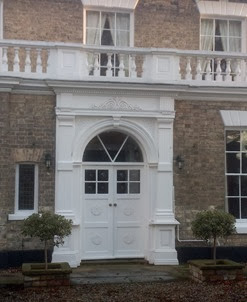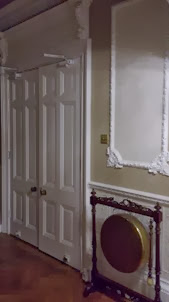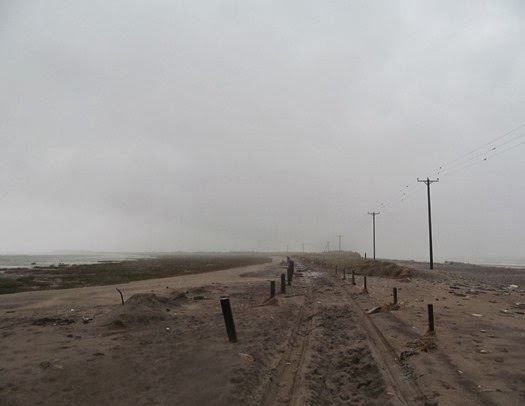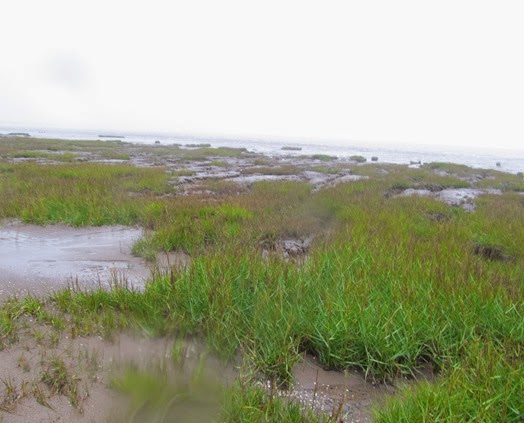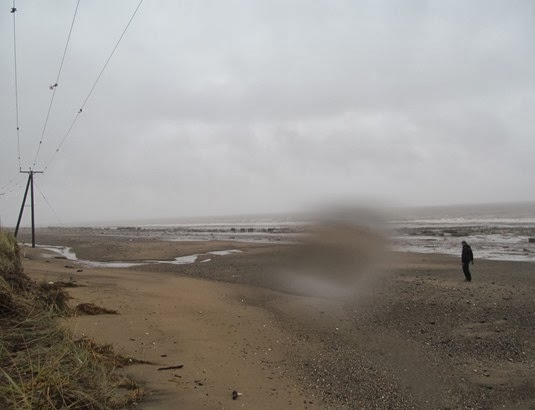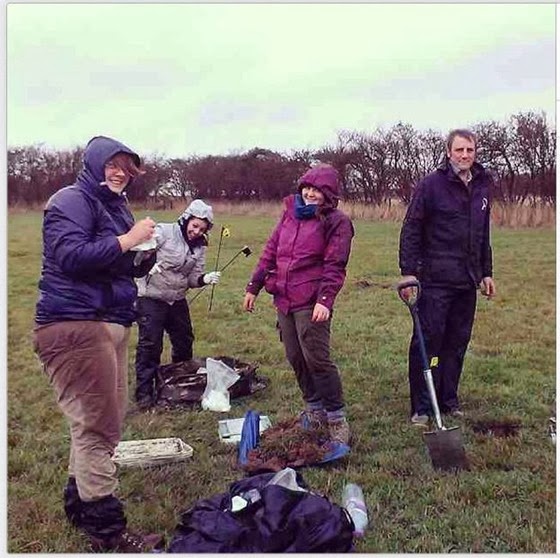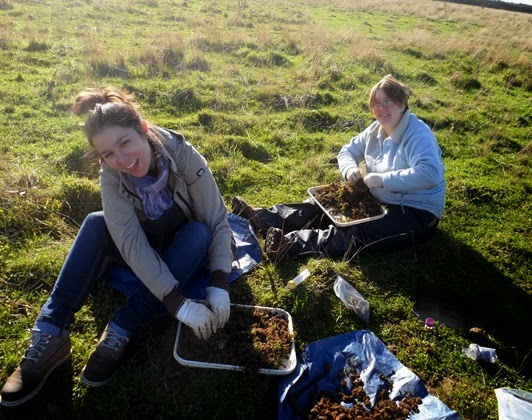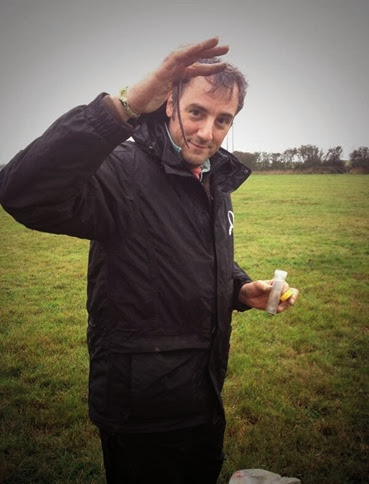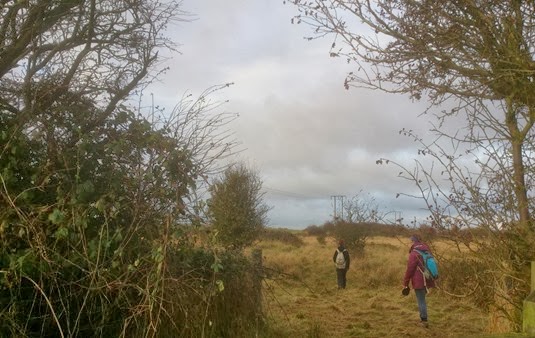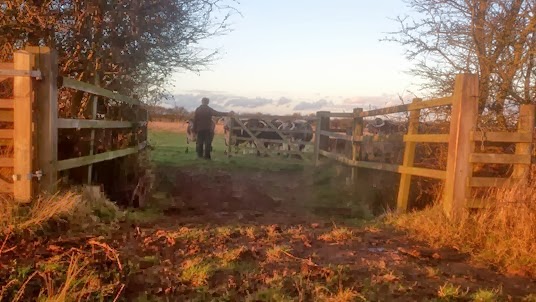This weekend saw a return visit to FSC Preston Montford for my final course in the University Certificate in Biological Recording and Species Identification - Identification of Macrofungi tutored by Irene Ridge. An interest in fungi (or mycology) was one of my earliest, after attending a fungi foray at Queen Elizabeth Country Park, Hampshire, with the RSPB’s Phoenix group way back in 1996. This led me to purchase a compound microscope in 2000 but I found it difficult to master the techniques needed to prepare slides without tuition and soon moved on to other groups, hence my motivation to attend this course and have another go.
After an introduction to fungi and how to record and describe specimens on the Friday evening it was off to Attingham Park on Saturday to collect our own specimens.


This site introduced me to grassland fungi, a habitat which I had not forayed before. The short, old lawns around Attingham Hall are an example of waxcap-grassland, a fungal community characterised by waxcaps (Hygrocybe spp.), club fungi (Clavariaceae) pink-gills (Entoloma spp.) and earthtongues (Geoglossaceae). Waxcap-grasslands are of conservation interest as indicators of unimproved grassland, a threatened habitat in the UK. It is only recently they have begun to receive attention on their ecology and distribution, with a English Nature Report published in 2003.
Back in the lab we began identifying our collections using a mixture of identification books and keys. I began by making spore prints as the colour of the spores is a key feature in identification, in the past I had done this by cutting the cap off and putting it on white and black paper but Irene demonstrated suspending the fruit body over a microscope slide in a cup. This keeps the specimen moist, as spores do not drop when the atmosphere is dry, explaining why I was not very successful with mine in the past!

On the Sunday we were off on another trip, this time to woodland at Nesscliffe Country Park.
Russula is one of my favourite fungi, they generally have a typical mushroom shape, crumbly flesh and gills (their common name is brittlegill). There are many species, often with brightly coloured caps like the yellow Russula ochrolecua we found in numbers at Nesscliffe, this is very common species which grows with many species of trees, but other Russula form mycorrhiza with specific trees and are one of the groups were good field notes are important. They are also identified by differences in cap and spore colour, ideally using a colour card as this can be subjective. Taste can also be important, which is checked by chewing a small piece which is then spat out, some have a very hot taste. This multisensory aspect of fungi identification is part of the appeal for me although the subjective nature of colour, smell and taste can be a problem, with some books describing species as smelling of obscure things as ‘Russian leather’ and ‘old laundry soap’!
Also at Nesscliffe I found a branch covered with wonderful Jelly Ear (Auricularia auricula-judae) one of my favourite fungi as it looks so much like an ear. I also found a tiny jelly fungus growing on beech mast while I was searching (unsuccessfully) for the beechmast fungus Xylaria carpophila. Another highlight was the Wood Woollyfoot (Gymnopus peronatus) which as the common name suggests has a lovely ‘woolly’ base to the stipe.
Wood Woollyfoot (Gymnopus peronatus) in habitat and close up in the lab showing woolly base to stipe
Another old favourite is “smell it before you see it” Stinkhorn (Phallus impudicus) although we only found in the ‘egg’ stage and one old specimen, both badly eaten by slugs, missing out on in its erect magnificence.
Back in the lab Irene gave a demonstration of microscopy techniques for fungi and I had a go myself, finally seeing the spores, basidia and cystidia which I had failed to find on my own. These preparations involve taking a small piece of gill, putting a drop on a stain called Congo Red on top and then squashing a coverslip gently over the top. After blotting any excess liquid the slide is examined under a high power microscope. I was hoping to show some of my own slides but unfortunately I don’t have any Congo Red at home so the photomicrographs below are courtesy of Wikipedia Commons.
 |
| Basidia stained with Congo Red, the pointy bits on top are where the spores attach By Andreas Kunze (Own work) [CC-BY-SA-3.0 (http://creativecommons.org/licenses/by-sa/3.0)], via Wikimedia Commons) |
Basidia (singular basidium) are the spore bearing structures in one of the major groups of fungi, the Basidiomycota which includes most of the species identified this weekend; the shape and number of spores is used in identification. Cystidia are sticky-outy cells found on various parts of the fungal fruit body, and the position, shape and reaction with certain chemicals are important for identification.
Cystidia
By Andreas Kunze (Own work) [CC-BY-SA-3.0 (http://creativecommons.org/licenses/by-sa/3.0)], via Wikimedia Commons)
|













